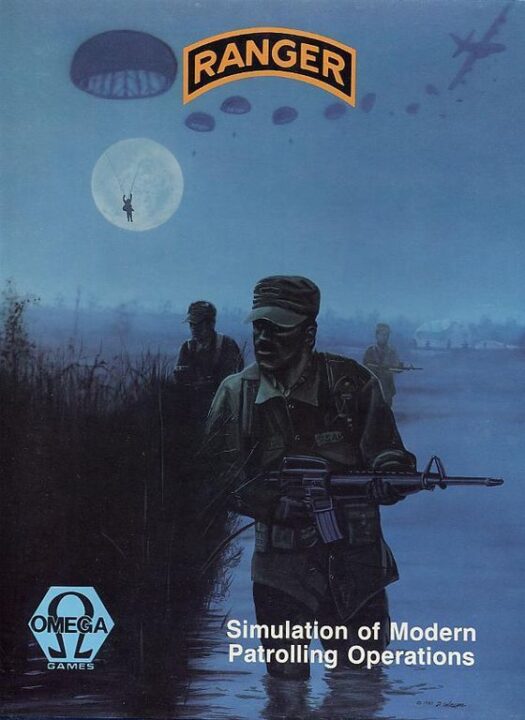Hey there, board game buddies! If you’re anything like me, you love hunting for the next great game to bring to game night—one that doesn’t just live on your shelf collecting dust. Today you’re in luck, because this is my review of Ranger. I’ve played it with my usual crew (the good, the bad, and the dice-chucker), and I’ve got tales of clever moves, sneaky steals, and, yes, a bit of ranting about game balance. Is it the next essential for your collection, or one to leave behind at the store? Let’s see how it holds up!
How It Plays
Setting up
First, pop open the box and try not to lose the tiny tokens. Lay out the main board, hand every player a ranger meeple, a player board, and a handful of resource cubes. Place the animal cards and danger tokens where the instructions tell you. Appoint the most outdoorsy friend as the first player, or argue over who wore the most green.
Gameplay
On your turn, you move your ranger, deal with a wild event (like a bear with an attitude), and try to collect resources. Use these to save wildlife, build camps, and score points. You can block paths, mess with rivals, or just wander aimlessly and hope nobody notices. Plan your moves, manage your stuff, and watch out for random events—sometimes the forest fights back.
Winning the game
After a set number of rounds (or until everyone’s had at least one dramatic meltdown over resource tokens), add up your points from wildlife rescues, area control, and completing secret goals. Whoever has the most points wins and can claim the title of Head Ranger, along with bragging rights until the next game night.
Want to know more? Read our extensive strategy guide for Ranger.
How Ranger Plays: Mechanics That Try (and Sometimes Stumble)
Let’s get right into the nuts and bolts of Ranger, because as much as I love a good forest story, I’d rather not get lost in the weeds. In Ranger, you play as—shocker—a ranger, trying to protect the land from various threats, rescue helpless animals, and collect gear. The game uses action points as its heartbeat. You get a set number of actions per turn, and you spend those on moving, rescuing, fighting, or (if you’re like my friend Tom) just wandering off and doing nothing useful.
The core mechanic is a blend of card play and dice rolling. You draw cards that give you special moves or gear—no deck-building, just drawing and praying for a good one. Dice rolls decide battles, animal rescues, and terrain challenges. Here’s where my excitement got a bit deflated. I enjoy some randomness, but when I watched my careful planning go up in smoke thanks to a single, traitorous die, it was a buzzkill. If you love feeling like fate’s plaything, you’ll have a blast. But if you crave strategy and skill, you may end up glaring at those dice like I did.
Balance? Well, the idea’s there. The animals and threats scale with player count, and there’s some clever teamwork potential. But certain cards feel overpowered—my buddy Jill once rescued half the forest in one turn, leaving the rest of us staring at our now-pointless gear. Some missions feel swingy, especially if you get unlucky with card draws.
So, Ranger tries to keep things fair, but luck sometimes wears the pants in this relationship. Next, let’s see if Ranger’s player interaction is wild fun or just a bear hug you didn’t ask for.

Player Interaction and the Strategic Wilds of Ranger
If you enjoy sneaky moves and head-to-head face-offs, Ranger delivers a decent slice of player interaction. I found myself plotting against my friends, often giggling at their groans when I snatched a spot right before they could. There’s a fair bit of blocking, as pathways through the forest can get crowded, especially when everyone is racing for the juiciest resources. In our group, Leo (who always overthinks things) tried to form alliances, which lasted about four turns before we realized he was just trying to keep the best locations for himself. Not today, Leo, not today.
Strategically, Ranger won’t make you sweat bullets, but it does reward a bit of forward planning. You want to manage your resources and plan your routes wisely, since wasted moves can cost you dearly toward the end. I loved that moment when someone (usually me) realized they’d left their only path blocked and had to rethink their whole woodland masterplan. The game keeps you on your toes but doesn’t go full brain-melter. I’d call the strategy level solid, just not legendary. Some players might crave even deeper layers, but for my crew, it was just the right amount of thinky mixed with cheeky.
The direct competition for forest spots keeps things feisty. Expect playful banter and at least one person moaning, “Oh come on!” every round. You need to pay attention to what your friends are doing, and occasionally steal something they clearly want, just to see the look on their face. Priceless.
If you’re itching to know how Ranger’s art and component quality stack up, get ready as I uncover every nut, bolt and meeple in the next section!
Ranger’s Visuals: Are You Playing a Game or a Work of Art?
Let me tell you, when I first opened Ranger, I felt like a giddy kid on their first treasure hunt. The box alone gave me hope—no weird off-center printing, thank goodness. Ranger’s components feel solid in your hands. The cards aren’t those tissue-thin slips that make you pray no one sneezes. They’re thick, with a slight linen finish, so shuffling doesn’t feel like folding laundry.
The tokens in Ranger also deserve some applause. They’re chunky and have a satisfying clack when you toss them on the table. Usually, I’m the person who can’t resist absentmindedly fiddling with pieces, and this game delivered a lot of clickity-clack therapy. Even the resource tokens have little icons that made me smile (I never thought I’d call a pile of berries or rope ‘cute,’ but here we are).
Now, for the artwork. Ranger’s style is like the cozy mashup of a nature guide and a Saturday morning cartoon. It doesn’t try to be hyper-realistic, but it pulls you into the woods with every glance. Each card features quirky little touches—you might spot a squirrel photobombing a campsite or a raccoon eyeing up the supplies. This lighthearted art adds plenty of personality, making it feel like the game’s winking at you the whole time.
If I had to nitpick, the player boards could’ve used a tad more thickness. After a few games, one of mine started to warp like my willpower in front of free snacks. Still, it’s hard to stay mad when everything else is so vibrant and tactile.
Ready your gear, because next, I’m spilling the beans about how often you’ll want to trek back into Ranger’s wilds (and how long you’ll be stuck there)!
Is Ranger Worth Playing Again and Again? Let’s Talk Replayability and Game Length
If you’re like me, you always ask, “Is this a game I’ll actually want to play more than once?” Well, Ranger does a pretty good job giving you reasons to come back to the table. Each game, my friends and I kept picking different cards, and I tried new paths to see if I could finally beat Dave, who seems to think he’s the Bear Grylls of the group. The variable setup helps; you get new maps and mission combos, so it doesn’t feel stale after two or three sessions.
But let’s talk about game length. Ranger claims it takes about an hour. In reality, it took us about an hour and a half because someone (I’m not naming names, but it rhymes with Shoshanna) kept overthinking every move. The good news is, it’s a satisfying length for an evening game—long enough to make your choices matter, but not so long that you start to envy the stunned animal tokens on the board.
I also want to point out, there’s a solo mode in Ranger if you ever feel like pretending you’re lost in the wild by yourself. It works pretty well! The game keeps you guessing, and the replay value stays strong since outcomes can change with your strategy.
Do I recommend Ranger? If you enjoy exploring new strategies, don’t mind the game running a bit longer sometimes, and want a game that doesn’t gather dust—absolutely. Ranger won’t end up in the back of your closet. Unless your closet is where you play games. In that case, I salute your commitment.
Conclusion
And there you have it—my full review of Ranger! After many laughs, some intense planning, and more than one failed wood gathering, I can say Ranger is a solid pick for most game nights. It looks great, feels sturdy, and offers plenty to chew on for strategy fans. Sure, it’s not perfect—player boards could be thicker and you need to commit some time—but honestly, I found more to love than to groan about. If you want a game with fair play, cool art, and lots of ways to win, Ranger is worth checking out. Just remember to sharpen your axes—and your wits!


